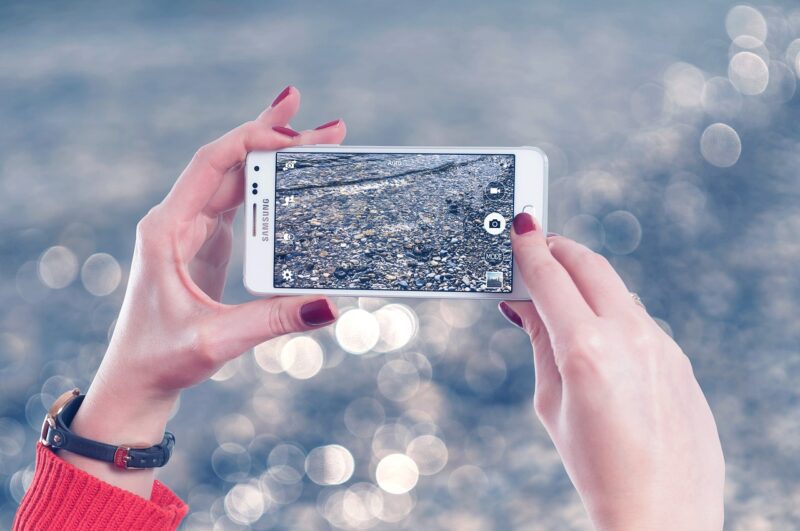iPhone or Android for Photography? A Comparison for Photo Enthusiasts
November 12, 2024

In the age of smartphones, the debate between iPhone and Android for photography has gained significant traction. With advancements in camera technology and software capabilities, both platforms offer impressive tools for capturing stunning images. This article delves into the key features, benefits, and limitations of iPhone and Android cameras to help photography enthusiasts make an informed choice.
1. Camera Specifications: A Closer Look
Smartphone cameras are measured by several key specifications, including megapixels, aperture size, and sensor quality. Here’s how the major players stack up:
- iPhone: The latest iPhone models, such as the iPhone 14 Pro, feature a triple-camera system with 12 MP ultra-wide, wide, and telephoto lenses. The integration of advanced computational photography makes the iPhone particularly adept at handling low-light situations and HDR imaging.
- Android: High-end Android models, like the Samsung Galaxy S23 Ultra, offer up to 200 MP cameras, a versatile quad-camera setup, and improved optical zoom capabilities. Many Android devices allow for deeper customization of camera settings, which can appeal to photography enthusiasts seeking more control over their images.
While megapixels can be a crucial factor, it’s essential to consider how a smartphone’s software processes images, as this greatly affects the overall photo quality.
2. Software and User Interfaces
The user interface and software experience play a vital role in capturing great photographs. Let’s explore how iPhone and Android devices differ in this aspect:
- iPhone: Apple’s Camera app is known for its simplicity and ease of use. Features such as Live Photos, Night Mode, and Smart HDR are easily accessible for both novice and experienced photographers. The integration with other Apple services, like iCloud, facilitates seamless photo storage and organization.
- Android: Android devices vary significantly based on the manufacturer. For instance, Samsung’s camera app offers various modes, including Pro Mode for manual adjustments and Single Take Mode, which captures multiple images and videos simultaneously. However, the variability in user experience across different Android models can be a drawback for some users.
In summary, while iPhone is engineered for a streamlined experience, Android provides flexibility, allowing users to explore advanced photography settings.
3. Performance in Different Conditions
Photographers often find themselves shooting in various lighting conditions. Here’s how iPhone and Android perform in common scenarios:
- Low Light: iPhones, particularly the recent models, excel in low-light photography thanks to Night Mode and advanced image processing capabilities. The results often exhibit minimal noise with excellent detail retention.
- Daylight: Both platforms perform exceptionally well in well-lit environments, although Android’s higher megapixels can deliver greater detail under optimal conditions, particularly with zoomed shots.
- Dynamic Range: The iPhone’s HDR capabilities can balance bright skies and dark landscapes, producing well-exposed photos. However, Android devices allow for more manual adjustments, giving photography enthusiasts greater control over exposure settings.
Ultimately, both devices offer robust performance; it comes down to personal preference and shooting style.
4. Editing Tools and App Availability
Post-processing is crucial in photography, and having access to effective editing tools can enhance images significantly. Consider the following:
- iPhone: The Photos app offers a suite of editing tools, including exposure, saturation, and cropping options. Additionally, applications like Snapseed and VSCO are available on iOS, allowing for further creative flexibility and professional editing capabilities.
- Android: Like iPhones, Android devices come equipped with various editing apps, including Adobe Lightroom and PicsArt. Some brands also offer dedicated gallery apps that provide advanced editing features right after taking a photo.
Both platforms provide a wealth of editing options, covering the needs of casual users while also catering to professional photography demands.
5. Accessories and Add-Ons
The ecosystem surrounding smartphone photography is crucial, often involving various accessories that enhance the experience. Here’s how the two platforms differ:
- iPhone: A vast array of accessories are available, including gimbals, tripods, lenses, and lighting solutions. The popularity of iPhones in the photography community has led to the development of high-quality add-ons specifically designed for iOS devices.
- Android: While there are also many accessories available for Android devices, the options may vary significantly based on manufacturer compatibility. However, the continuous growth in the Android market has led to an increase in specialized lens attachments and stabilization equipment tailored for various Android smartphones.
In terms of accessories, both ecosystems are well-supported, although iPhone users can often find a more extensive selection tailored specifically for their devices.
6. Conclusion: Choosing the Right Smartphone for Photography
Ultimately, the decision between iPhone and Android for photography will depend on individual preferences and needs.
For users looking for a user-friendly experience, seamless integration, and reliable performance, the iPhone shines with its exceptional photo quality and intuitive interface. However, if you seek advanced customization, an extensive hardware range, and high-resolution capabilities, an Android device might suit your needs better.
As photography enthusiasts, it’s essential to consider your priorities—whether that’s the convenience of use, control over settings, or the availability of accessories. With either platform, there are tremendous opportunities to capture breathtaking images and express your creativity through photography. Choose the device that fits your style best, and start capturing those moments!







